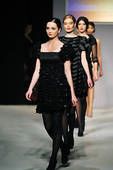Introduction
The fashion industry is one of the newest industries that deal with the trends of items to be worn. Initially, tailors and dressmakers made customized clothing. With the advancement of technology, mass and specialized production of clothing was realized. Notably, the fashion industry consists of four critical processes, which include production of raw materials, designing and production of fashion goods, rigorous marketing, and retail sales.
In this regard, the fashion industry has grown through various levels to address the needs of clothing among customers. The fundamental levels of the fashion industry include Haute couture, luxury segment, affordable luxury, mainstream brands and discount brands (Wilson 2011, p.24). For this reason, the fashion industry has influenced the manner in which both men and women are observed in society, but specifically focusing on women.
When undertaking the sales and marketing of fashion products, the body images of models used is critical. As a result, the average people especially women are discriminated against. However, the fashion industry has taken into consideration the impacts of the practice and has adopted means to challenge its negative effects.
How it is challenging
Based on the negative effects of the fashion industry on women, there are varied steps that have been taken to counter the discrimination. Since the inception of modeling, which stimulates the advertising of fashion products, skinny models are repeatedly used.

After the realization of the negative effects it has on women’s attitudes and behavior, countermeasures have been adopted. Firstly, many fashion shows have banned the use of skinny models. In this regard, average women are used to illustrating the beauty of the fashion products being displayed (Manlow 2007, p.85).
Furthermore, varied fashion products that meet the needs of many consumers are produced. Therefore, this trend discourages women from struggling to attain unrealistic body images, which are displayed by media or in shows. Media manipulation of models is another crucial element that has been addressed by the fashion industry
On this note, the media continuously uses technology to alter the reality of beauty among women when marketing fashion products. For instance, fashion blogs, television adverts, and social networks adopt Photoshop software to change the body sizes of models used.
Therefore, most businesses are regulated from exaggerating the reality of the models used in the fashion industry. In addition, the fashion industry undertakes publicity programs that demonstrate the real beauty of fashion products amongst varied body sizes of women. This has significantly reduced the negative effects of the fashion industry on women.

How the fashion industry affects people?
Multiple challenges exist in the struggle to reduce discrimination against average women in the fashion industry. Primarily, the fashion industry uses the media to present its ideal products. In this case, women with the generally accepted model size of fourteen are used. This is influenced by the need to attract and retain consumers who buy fashion products. The skinny models are used mainly because of their flexibility and attractiveness to the eyes of the audience (Espejo 2010, p.121).
Therefore, when defining the nature of beauty amongst women, skinny models are used as the reference body. For this reason, most women begin struggling to attain the acceptable standard body sizes at a tender age. This outcome is only realized through under-eating, consumption of pills, and physical exercises. Despite this strenuous process, the majority of women do not realize their objective.
Evidently, such practice leads to disparities and discrimination among women. In addition, the use of skinny models in media, runway shows, and fashion spreads instill impractical body images for the audience. Thus, it escalates the negative effects of the fashion industry.
References
Espejo, R 2010, The fashion industry: opposing viewpoints, Greenhaven Press, Detroit.
Manlow, V 2007, Designing clothes: culture and organization of the fashion industry, Transaction Publishers, New Brunswick.
Wilson, R 2011, Fashion industry, Rosen Central, New York, NY. Sources of Illustrations
Fig. 1 ‘Fotosearch’, 2010, Web.
Fig. 2 ‘click your hobby’, 2011. Web.